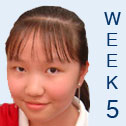Synonyms and Antonyms
Antonymy is usually referred to as words having opposite meanings, but very seldom do we specify the kind of opposition. There are four types of oppositions in antonyms, and knowing them is of paramount importance when teaching vocabulary within any given Language Arts class. These types of opposition are the following:
Complementaries – Truly represent oppositeness of meaning; one excludes the other.
male – female
Converses – Can paraphrase each other, and we can clearly see the relationship as reciprocal.
husband – wife
(Julia is Erick’s wife, and Erick is Julia’s husband).
Gradable antonym – Very relative opposites, and have a range that goes from one extreme to another.
big – small
(huge – very big – medium sized – small – tiny)
Multiple incompatibles – Sets of close systems, very easy to remember (one member of the set reminds you of the others)
spring – summer – autumn – fall – winter
All these types of semantic relations are useful when teaching vocabulary in any language class because they provide a framework for the learner to understand semantic boundaries. By incorporating exercises that derive from these sense relations, we also promote high order thinking. Locating definitions from the dictionary develops only comprehension skills, while deciphering between types of antonyms allows students to categorize words based on their analysis of the similarities and differences among the antonyms.
Asking students these kinds of questions when teaching antonyms is highly effective:
What’s the opposite of _____________?
What’s missing from this group?
How does ____________ tie in with what we learned before?
What might happen if _________________?
What might ______________ think about this?
Yes, that’s right, but how did you know it was right?
Can you think of another way we could use this?
How does that compare with ______________?
How is this one better than the other?








